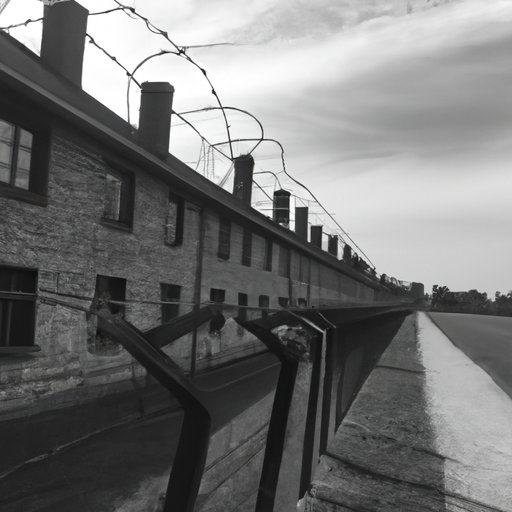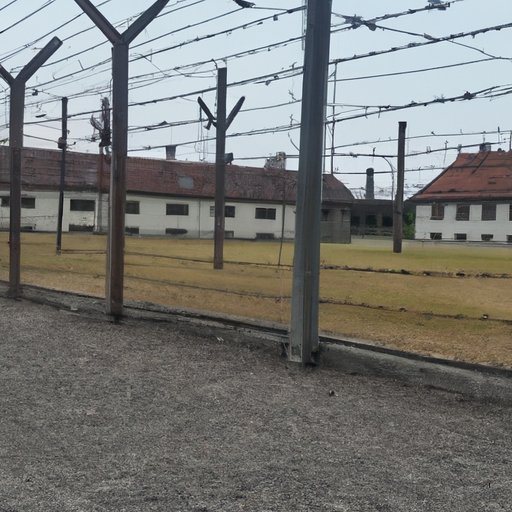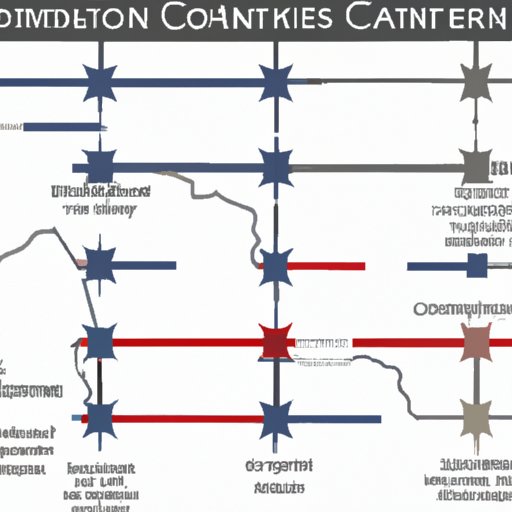Introduction
Concentration camps are places of detention and confinement where people are held without trial or other legal process. These camps were first used in the late 19th century when they were established by colonial powers as a way to control and suppress indigenous populations. This article will explore the history of concentration camps and examine their impact on society.
An Historical Overview of Concentration Camps
The concept of concentration camps dates back to the late 19th century, when they were first used by colonial powers such as the British in South Africa during the Boer War (1899-1902). During this period, the British detained thousands of Boer civilians in camps, where they were subjected to overcrowding, inadequate food and medical care, and harsh living conditions.
The practice of using concentration camps spread throughout the world in the early 20th century. During World War I, the German Empire used them to intern suspected enemies of the state, including socialists, pacifists, and conscientious objectors. The Russian Empire also used concentration camps to hold political prisoners during the same period.
In the 1930s, the Nazi Party in Germany took control of the country and began to use concentration camps on a massive scale. The Nazis established a network of camps that served a variety of purposes, including forced labor, interrogations, and extermination. The horrors of these camps have been well documented, and they remain a symbol of the brutality of the Nazi regime.

The Rise of Concentration Camps in Nazi Germany
The Nazi Party came to power in 1933 and quickly began to establish a network of concentration camps across Germany. Initially, these camps were used to incarcerate political opponents of the regime, such as communists, socialists, and dissident religious groups. Over time, the camps expanded to include other “undesirable” elements of society, such as Jews, Roma, homosexuals, and the mentally and physically disabled.
The camps were notorious for their brutal treatment of inmates, who were subjected to forced labor, malnutrition, disease, and summary executions. By the end of World War II, the Nazi concentration camp system had become one of the most infamous examples of human rights abuses in modern history.

The Impact of Concentration Camps on Society
The horrific conditions of concentration camps have had a lasting impact on society in both psychological and social terms. Survivors of concentration camps often suffer from long-term psychological effects, such as post-traumatic stress disorder, depression, and anxiety. These psychological effects can be passed down through generations, creating a legacy of trauma that persists even after the camps have been closed.
The social and political implications of concentration camps are also far-reaching. The systematic persecution of certain groups of people, such as Jews and Roma, has led to increased awareness of the dangers of discrimination and prejudice. In addition, the use of concentration camps has prompted international organizations to create laws and regulations to protect human rights and prevent similar atrocities from occurring in the future.

A Comparative Analysis of Concentration Camps Around the World
Although concentration camps are primarily associated with Nazi Germany, they have been used by many different regimes throughout history. For example, the Soviet Union used concentration camps to detain political opponents during Joseph Stalin’s rule in the 1930s and 1940s. Other countries, such as North Korea and Cuba, have also been accused of operating concentration camps in recent years.
A comparative analysis of concentration camps around the world reveals some common themes. In all cases, the camps are used to repress dissent and maintain control over the population. In addition, they are often characterized by overcrowding, malnutrition, and poor sanitation, as well as a lack of access to medical care and legal representation. Despite their differences, all concentration camps share a common purpose: to oppress and dehumanize those within their walls.
Conclusion
Concentration camps have been in existence for more than a century, and their impact on society has been devastating. From their early beginnings in the late 19th century to their horrific use in Nazi Germany, concentration camps have been used to repress dissent and deny basic human rights. Although the use of concentration camps is still prevalent in some parts of the world today, their legacy serves as a reminder of the need to protect the fundamental rights of all individuals.
(Note: Is this article not meeting your expectations? Do you have knowledge or insights to share? Unlock new opportunities and expand your reach by joining our authors team. Click Registration to join us and share your expertise with our readers.)
